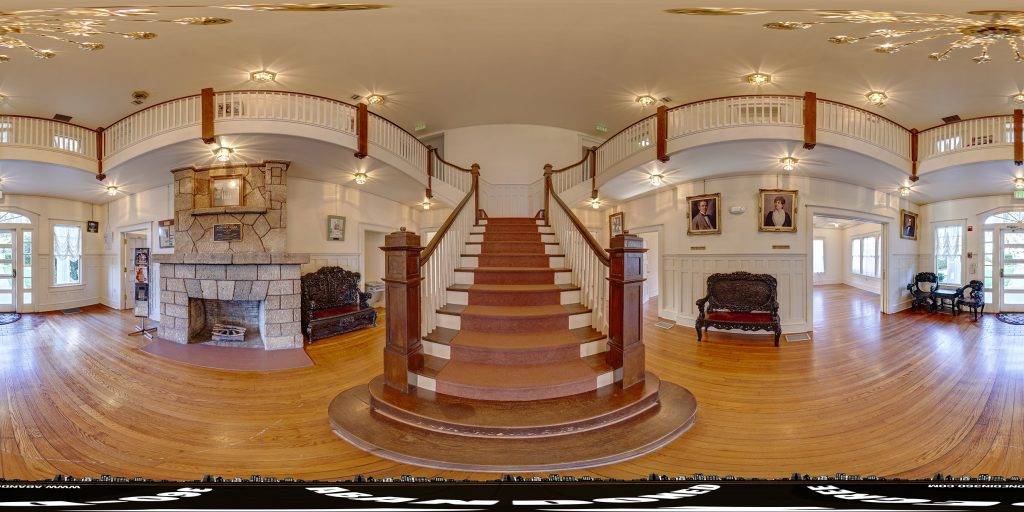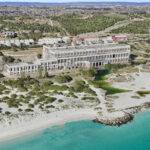Porcher House
Discover the rich history of the Porcher House in Cocoa, Florida through a captivating virtual tour. Immerse yourself in nineteen 360-degree panoramic images as you leisurely explore this iconic Florida residence.
Click here to view it in fullscreen.
About the Porcher House
The Porcher House, a historic home in Cocoa, Florida, stands as a testament to the region’s rich history and architectural heritage. Built in 1916 by Edward Postell Porcher for his wife, Byrnina M. Peck, the Porcher House is an exquisite example of 20th-century classical revival architecture, uniquely adapted to the Florida climate. This blog post delves into the detailed history of the Porcher House, exploring its construction, the family who lived there, and its transformation over the years.
The Construction of the Porcher House
The Porcher House, located at 434 Delannoy Avenue in Cocoa, Florida, was constructed in 1916. Edward Postell Porcher, a pioneer in the citrus industry, built this magnificent home as a residence for his family. The house is an architectural marvel, made from native coquina rock, a material that is not only locally sourced but also highly durable and suited to the Florida climate. The interior of the house is equally impressive, featuring fine woodwork with teak, oak, and cedar, showcasing the craftsmanship and attention to detail that went into its construction.
The Porcher Family
Edward Postell Porcher, the man behind this grand home, was a significant figure in the citrus industry. He is credited with being the first to wash, grade, and inspect fruit, a practice that revolutionized citrus farming. His wife, Byrnina M. Peck, was the first postmistress of Merritt Island, playing a vital role in the community. The Porcher family’s contribution to the region extends beyond their professional achievements, as their home became a landmark in Cocoa, Florida.
Life in the Porcher House
The Porcher House, with its ten bedrooms, was more than just a residence; it was a symbol of the prosperity and social status of the Porcher family. The family lived in the house for several decades, during which time it served as a center for social gatherings and community events. The house, with its spacious rooms and elegant design, was well-suited for entertaining guests and hosting events.
Transition to Public Use
In the 1950s, a significant change occurred when the city of Cocoa acquired the Porcher House from the Porcher family. This acquisition marked the transition of the house from a private residence to a public building. The city repurposed the Porcher House as the City Hall, a role it played for some time, serving the administrative needs of Cocoa.
The Porcher House Today
Today, the Porcher House is no longer used as City Hall but has found a new purpose. It is rented out for special occasions, such as weddings, receptions, and other events. This new role has allowed the Porcher House to remain an active part of the community, providing a unique and historic venue for various events. The house continues to be a point of interest for both locals and visitors, drawing people who are interested in history, architecture, and the story of Cocoa, Florida.
Architectural Significance
The Porcher House is not only significant for its historical value but also for its architectural importance. As an example of classical revival architecture adapted for the Florida climate, it represents a unique blend of traditional design with practical considerations for the local environment. The use of coquina rock and the detailed woodwork inside are particularly noteworthy, showcasing the adaptability and creativity of early 20th-century architecture.
Preservation and Recognition
Recognizing its historical and architectural significance, the Porcher House was added to the U.S. National Register of Historic Places on January 6, 1986. This designation underscores the importance of preserving such historical structures, not only as a reminder of the past but also as a treasure to be enjoyed by future generations.
Conclusion
The Porcher House in Cocoa, Florida, is more than just a building; it is a piece of history, a work of art, and a testament to the legacy of the Porcher family. From its construction in 1916 to its current role as a venue for special occasions, the Porcher House has played a significant role in the community. Its addition to the National Register of Historic Places ensures that this magnificent home will be preserved and appreciated for many years to come.
If you liked this post, you might find these interesting as well, the Georgia Guidestones, the Palace of Culture Energetik in Pripyat, or the Princess Motel in North Carolina.

A 360-degree panoramic image captured inside the historic Porcher House in Cocoa, Florida.
Do you have 360-degree panoramic images captured in an abandoned location? Send your images to Abandonedin360@gmail.com. If you choose to go out and do some urban exploring in your town, here are some safety tips before you head out on your Urbex adventure.
Unlock the secrets of exploration by diving into precise GPS data available exclusively for an array of hidden gems and hundreds of other captivating sites, all within our members’ section. By investing in a Gold Membership, you’re not just gaining access; you’re securing a key to a vast, global archive of abandoned, untouched, and mysterious locations waiting to be discovered. Embark on your adventure with confidence, knowing every corner of the world can be within your reach. Don’t just observe—explore, discover, and claim the extraordinary journey that lies ahead with our treasure trove of world secrets. Subscribe now and transform the way you see the world!
Equipment used to capture the 360-degree panoramic images:
- Canon DSLR camera
- Canon 8-15mm fisheye
- Manfrotto tripod
- Custom rotating tripod head
If you want to start shooting 360-degree panoramic images, you might want to look onto one-click 360-degree action cameras.
Click on a state below and explore the top abandoned places for urban exploring in that state.






